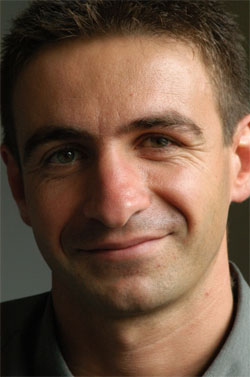 Didier Bourissou, born in Nice (1972) studied chemistry at the Ecole Normale Superieure in Paris. He obtained his Ph D. degree in 1998 under the supervision of G. Bertrand at the Laboratory of Coordination Chemistry, University of Toulouse (Dina Surdin Award from the French Chemical Society). He then worked as a research associate with F. Mathey and P. Le Floch at the Ecole Polytechnique in Palaiseau. He is currently CNRS Director of Research at the “Laboratoire Hétérochimie Fondamentale et Appliquée” in Toulouse (University Paul Sabatier, CNRS) and Associate Professor at the Ecole Polytechnique in Palaiseau. His research interests span a wide range of topics in main group, transition metal and polymer chemistry. These include the interplay between ambiphilic derivatives and metal fragments as well as small molecules; the coordination of indenyl rings featuring donor sidearms to get access to original low-hapticity complexes; the synthesis and applications of biodegradable polymers (new activated/functionalized monomers, controlled organo-catalyzed ring-opening polymerization, drug delivery systems). He was awarded the Bronze Medal of the CNRS (French National Research Council), the Clavel Lespiau Distinction (French Academy of Sciences) and the Acros Award (French Chemical Society) in recognition of this work.
Didier Bourissou, born in Nice (1972) studied chemistry at the Ecole Normale Superieure in Paris. He obtained his Ph D. degree in 1998 under the supervision of G. Bertrand at the Laboratory of Coordination Chemistry, University of Toulouse (Dina Surdin Award from the French Chemical Society). He then worked as a research associate with F. Mathey and P. Le Floch at the Ecole Polytechnique in Palaiseau. He is currently CNRS Director of Research at the “Laboratoire Hétérochimie Fondamentale et Appliquée” in Toulouse (University Paul Sabatier, CNRS) and Associate Professor at the Ecole Polytechnique in Palaiseau. His research interests span a wide range of topics in main group, transition metal and polymer chemistry. These include the interplay between ambiphilic derivatives and metal fragments as well as small molecules; the coordination of indenyl rings featuring donor sidearms to get access to original low-hapticity complexes; the synthesis and applications of biodegradable polymers (new activated/functionalized monomers, controlled organo-catalyzed ring-opening polymerization, drug delivery systems). He was awarded the Bronze Medal of the CNRS (French National Research Council), the Clavel Lespiau Distinction (French Academy of Sciences) and the Acros Award (French Chemical Society) in recognition of this work.
Please follow the link for further information on Didier’s research group and his recent paper in Polymer Chemistry.
What was your inspiration in becoming a chemist?
I’ve always been interested in sciences, especially mathematics and physical sciences, and I’ve had the chance to get passionate and stimulating teachers at school. My inspiration to become a chemist has also certainly to do with my fascination for drawing new chemical entities and transformations thereof. I always found exciting to play with atoms and bonds to try to assemble complex structures, hopefully in a controlled and efficient way.
What was the motivation behind the research in your recent Polymer Chemistry paper? (DOI: 10.1039/C1PY00210D)
Molecular chemist by training, I am always impressed by the efficiency and degree of control with which simple synthetic tools can be applied to the preparation of macromolecules. In this respect, my group has been particularly interested over the last few years in the use of simple organo-catalysts to promote controlled Ring-Opening Polymerization. In particular, we have shown that sulfonic acids are rather efficient, and our interest for understanding their precise mode of action revealed some striking features: the highest activities are not always met with the most acidic catalysts, and the acidic activation of the heterocyclic monomer is critically accompanied by some participation of the basic S=O moiety, the catalyst acting overall as a proton shuttle. In building on these studies, we became interested in phosphoric and phosphoramidic acids with the aim of further exploring the potential of Brönsted acid catalysis in ROP. In this article, we report our first results along these lines, from both experimental and computational perspectives.
Why did you choose Polymer Chemistry to publish your work?
Polymer Chemistry clearly represents an ideal tribune to disseminate our work within the community. The editing and production processes are very straightforward and efficient, and the quality of the papers is really impressive and stimulating. The number and content of peer-review journals tend to explode frenetically, and I am rather sceptical about that. But in this context, Polymer Chemistry is a pleasing exception. The new journal of the RSC strongly contributes to the development of polymer chemistry and nicely completes the series of journals of the field.
In which upcoming conferences may our readers meet you?
I invite you to attend and join us at the first French Meeting on Amphiphilic Copolymers to be held next May in Toulouse. In addition, we have a chance to meet and chat next July at Warwick 2012, a polymer conference under the auspices of the UK Polymer Group (thanks Andrew for the kind invitation, I am really looking forward to being there!).
How do you spend your spare times?
Most of my spare time is devoted to my family. We have a lot of fun skying and hiking together, as well as watching rugby games. Travelling together is also very enjoyable and we very much appreciate having good time with friends / colleagues.
Which profession would you choose if you were not a scientist?
I would probably be doctor. I’ve always been amazed and fascinated by the complexity and efficiency of the human body.











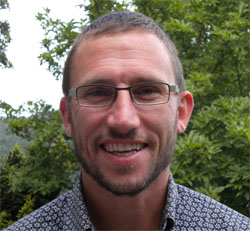 Christophe Detrembleur was born in Verviers (Belgium) in 1974 and he studied chemistry at the University of Liège (Belgium). In March 2001, he obtained his PhD under the supervision of Prof. Robert Jérôme at the Center for Education and Research on Macromolecules (CERM), University of Liège, Belgium. His major research topic was the search for new regulators for the controlled radical polymerisation of (meth)acrylic monomers. In parallel, he also contributed to the development of new functional aliphatic polyesters. He was an invited researcher at IBM, Almaden Research Center, California (USA) under the supervision of Dr. J. Hedrick for three months in 1998. In May 2001, he joined the Research Center of Bayer AG in Leverkusen (Germany), where he worked on materials synthesis and polymer processing. In January 2003, he moved to the polyurethane research division at Bayer, where he was involved in the development of new high performance UV coatings. In October 2003, he was awarded a permanent Research Associate position at CERM under the auspices of the National Fund for Scientific Research (F.R.S.-FNRS). In October 2008, he was promoted Senior Research Associate by the F.R.S.-FNRS and heads a research team at CERM. His main research projects are in the field of new controlled radical polymerisation techniques, preparation of new polymeric materials by these techniques, and contribution of macromolecular engineering to nanotechnology.
Christophe Detrembleur was born in Verviers (Belgium) in 1974 and he studied chemistry at the University of Liège (Belgium). In March 2001, he obtained his PhD under the supervision of Prof. Robert Jérôme at the Center for Education and Research on Macromolecules (CERM), University of Liège, Belgium. His major research topic was the search for new regulators for the controlled radical polymerisation of (meth)acrylic monomers. In parallel, he also contributed to the development of new functional aliphatic polyesters. He was an invited researcher at IBM, Almaden Research Center, California (USA) under the supervision of Dr. J. Hedrick for three months in 1998. In May 2001, he joined the Research Center of Bayer AG in Leverkusen (Germany), where he worked on materials synthesis and polymer processing. In January 2003, he moved to the polyurethane research division at Bayer, where he was involved in the development of new high performance UV coatings. In October 2003, he was awarded a permanent Research Associate position at CERM under the auspices of the National Fund for Scientific Research (F.R.S.-FNRS). In October 2008, he was promoted Senior Research Associate by the F.R.S.-FNRS and heads a research team at CERM. His main research projects are in the field of new controlled radical polymerisation techniques, preparation of new polymeric materials by these techniques, and contribution of macromolecular engineering to nanotechnology.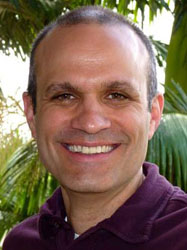 Marc Hillmyer received his B.S. in Chemistry from the University of Florida in 1989 and his Ph.D. in Chemistry from the California Institute of Technology in 1994. After completing a postdoctoral research position in the University of Minnesota’s Department of Chemical Engineering and Materials Science he joined the Chemistry faculty at Minnesota in 1997. He is currently a Distinguished McKnight University Professor of chemistry and leads a research group focused on the synthesis and self-assembly of multifunctional polymers. In addition to his teaching and research responsibilities, Marc also serves as an Associate Editor for the ACS journal Macromolecules and is the director of the Center for Sustainable Polymers at the University of Minnesota.
Marc Hillmyer received his B.S. in Chemistry from the University of Florida in 1989 and his Ph.D. in Chemistry from the California Institute of Technology in 1994. After completing a postdoctoral research position in the University of Minnesota’s Department of Chemical Engineering and Materials Science he joined the Chemistry faculty at Minnesota in 1997. He is currently a Distinguished McKnight University Professor of chemistry and leads a research group focused on the synthesis and self-assembly of multifunctional polymers. In addition to his teaching and research responsibilities, Marc also serves as an Associate Editor for the ACS journal Macromolecules and is the director of the Center for Sustainable Polymers at the University of Minnesota.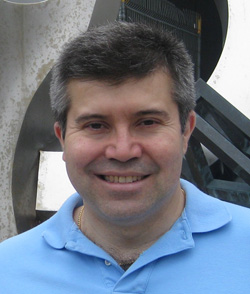
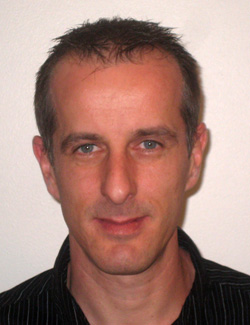 Eric Drockenmuller was born in 1973 in Thionville (France), and received his PhD degree in 2002 from the University of Strasbourg (France) after working on nitroxide-mediated radical polymerization. He undertook a two years postdoctoral position with Prof. C. J. Hawker (IBM Almaden Research Center, California, USA) and Prof. T. P. Russell (University of Massachusetts, Amherst, USA) working on the synthesis and functionalization of nanostructured materials. He was appointed Assistant Professor in 2004 and full Professor in 2011 at the University of Lyon 1 (France). Since October 2010 he has been a junior member of the “Institut Universitaire de France” (IUF).
Eric Drockenmuller was born in 1973 in Thionville (France), and received his PhD degree in 2002 from the University of Strasbourg (France) after working on nitroxide-mediated radical polymerization. He undertook a two years postdoctoral position with Prof. C. J. Hawker (IBM Almaden Research Center, California, USA) and Prof. T. P. Russell (University of Massachusetts, Amherst, USA) working on the synthesis and functionalization of nanostructured materials. He was appointed Assistant Professor in 2004 and full Professor in 2011 at the University of Lyon 1 (France). Since October 2010 he has been a junior member of the “Institut Universitaire de France” (IUF).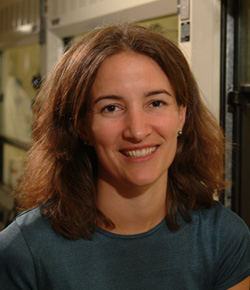 Heather D. Maynard received a B.S. with Honors in Chemistry from the University of North Carolina at Chapel Hill and a M.S. in Materials Science from the University of California, Santa Barbara. Her Ph.D. from the California Institute of Technology was awarded in the summer of 2000 for research in the group of Nobel Prize winner Robert Grubbs. She then moved to the laboratory of Jeffrey Hubbell at the Swiss Federal Institute of Technology in Zurich (ETH), where from 2000-2002 she was an American Cancer Society Postdoctoral Fellow. Dr. Maynard joined the UCLA faculty as an Assistant Professor in August 2002 as the first Howard Reiss Career Development Chair in the Department of Chemistry and Biochemistry and as a member of the California NanoSystems Institute. She is now an Associate Professor. Maynard’s research interests include polymer synthesis, biohybrid materials, surface modification, and nanomedicine.
Heather D. Maynard received a B.S. with Honors in Chemistry from the University of North Carolina at Chapel Hill and a M.S. in Materials Science from the University of California, Santa Barbara. Her Ph.D. from the California Institute of Technology was awarded in the summer of 2000 for research in the group of Nobel Prize winner Robert Grubbs. She then moved to the laboratory of Jeffrey Hubbell at the Swiss Federal Institute of Technology in Zurich (ETH), where from 2000-2002 she was an American Cancer Society Postdoctoral Fellow. Dr. Maynard joined the UCLA faculty as an Assistant Professor in August 2002 as the first Howard Reiss Career Development Chair in the Department of Chemistry and Biochemistry and as a member of the California NanoSystems Institute. She is now an Associate Professor. Maynard’s research interests include polymer synthesis, biohybrid materials, surface modification, and nanomedicine.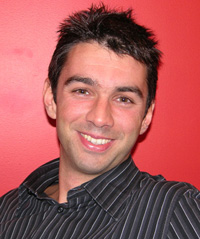 Dr. Cyrille Boyer received his PhD in polymer chemistry in 2005 from the University of Montpellier II. His PhD was in collaboration with Solvay-Solexis and devoted to the synthesis of new graft copolymers using grafting “onto” under the supervision of Prof. B. Boutevin and Prof. J.J. Robin. In 2005, he undertook an engineer position with Dupont Performance and Elastomers dealing with the synthesis of original fluorinated elastomers using controlled radical polymerization (e.g., iodine transfer polymerization). In October 2006, he joined the Centre for Advanced Macromolecular Design (CAMD) as a senior research fellow under the direction of Prof. Tom Davis. In 2009, he got an Australian Post-Doctoral Fellowship from the Australian Research Council (ARC). Recently, Dr. Cyrille Boyer has been appointed as a Nanomedicine Lecturer at the University of New South Wales. His research interests mainly cover the preparation of well-defined polymers for drug delivery and imaging applications, protein-polymer conjugates and hybrid organic-inorganic nanoparticles using controlled radical polymerization. He is also working on the preparation of new systems for energy storage using hybrid organic/inorganic nanomaterials. He has co-authored over 70 peer-reviewed research papers, including two book chapters and two international patents.
Dr. Cyrille Boyer received his PhD in polymer chemistry in 2005 from the University of Montpellier II. His PhD was in collaboration with Solvay-Solexis and devoted to the synthesis of new graft copolymers using grafting “onto” under the supervision of Prof. B. Boutevin and Prof. J.J. Robin. In 2005, he undertook an engineer position with Dupont Performance and Elastomers dealing with the synthesis of original fluorinated elastomers using controlled radical polymerization (e.g., iodine transfer polymerization). In October 2006, he joined the Centre for Advanced Macromolecular Design (CAMD) as a senior research fellow under the direction of Prof. Tom Davis. In 2009, he got an Australian Post-Doctoral Fellowship from the Australian Research Council (ARC). Recently, Dr. Cyrille Boyer has been appointed as a Nanomedicine Lecturer at the University of New South Wales. His research interests mainly cover the preparation of well-defined polymers for drug delivery and imaging applications, protein-polymer conjugates and hybrid organic-inorganic nanoparticles using controlled radical polymerization. He is also working on the preparation of new systems for energy storage using hybrid organic/inorganic nanomaterials. He has co-authored over 70 peer-reviewed research papers, including two book chapters and two international patents. Didier Gigmes got his education in chemistry at the University Paul Cezanne (Marseille, France). In 1998, he received his PhD in organic chemistry under the guidance of Prof. Paul Tordo (Marseille, France). He completed a first postdoctoral fellowship at Elf-Atochem, North America in Pennsylvania (USA) under the supervision of Dr. Gary Silverman. Then, he came back to France to work as a postdoctoral fellow under the supervision of Prof. Paul Tordo in Marseille. In 2001 he obtained a position of researcher at CNRS to develop nitroxide-mediated polymerization (NMP). In 2008 he defended his Habilitation at the University of Provence and became a group leader in June 2008. In October 2010, he was appointed Research Director at CNRS. During the past few years he has been working on the development of NMP and particularly the design of a highly efficient SG1-based alkoxyamine. After a significant contribution to the understanding of the mechanisms involved in NMP, one of his main concerns is now to promote NMP in material science for various applications such as biomaterials, environment and energy.
Didier Gigmes got his education in chemistry at the University Paul Cezanne (Marseille, France). In 1998, he received his PhD in organic chemistry under the guidance of Prof. Paul Tordo (Marseille, France). He completed a first postdoctoral fellowship at Elf-Atochem, North America in Pennsylvania (USA) under the supervision of Dr. Gary Silverman. Then, he came back to France to work as a postdoctoral fellow under the supervision of Prof. Paul Tordo in Marseille. In 2001 he obtained a position of researcher at CNRS to develop nitroxide-mediated polymerization (NMP). In 2008 he defended his Habilitation at the University of Provence and became a group leader in June 2008. In October 2010, he was appointed Research Director at CNRS. During the past few years he has been working on the development of NMP and particularly the design of a highly efficient SG1-based alkoxyamine. After a significant contribution to the understanding of the mechanisms involved in NMP, one of his main concerns is now to promote NMP in material science for various applications such as biomaterials, environment and energy.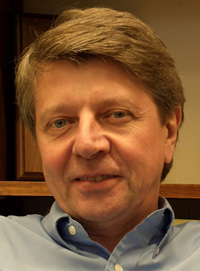 Krzysztof (Kris) Matyjaszewski received his PhD degree in 1976 at the Polish Academy of Sciences under Prof. S. Penczek. Since 1985 he has been at Carnegie Mellon University where he is currently J. C. Warner University Professor of Natural Sciences and director of Center for Macromolecular Engineering. He is also Adjunct Professor at the University of Pittsburgh and at the Polish Academy of Sciences. Kris is the editor of Progress in Polymer Science and Central European Journal of Chemistry. His publications have been cited over 42,000 times. His research interests include controlled/living radical polymerization, catalysis, environmental chemistry, and advanced materials for optoelectronic and biomedical applications.
Krzysztof (Kris) Matyjaszewski received his PhD degree in 1976 at the Polish Academy of Sciences under Prof. S. Penczek. Since 1985 he has been at Carnegie Mellon University where he is currently J. C. Warner University Professor of Natural Sciences and director of Center for Macromolecular Engineering. He is also Adjunct Professor at the University of Pittsburgh and at the Polish Academy of Sciences. Kris is the editor of Progress in Polymer Science and Central European Journal of Chemistry. His publications have been cited over 42,000 times. His research interests include controlled/living radical polymerization, catalysis, environmental chemistry, and advanced materials for optoelectronic and biomedical applications.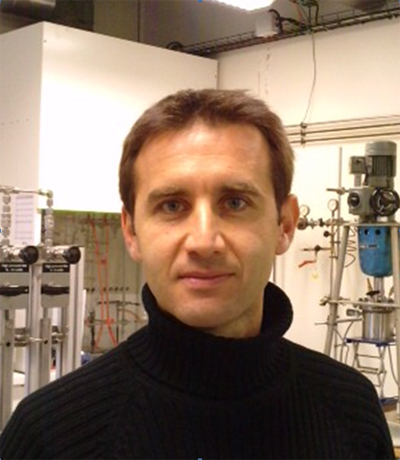 Franck D’Agosto studied chemistry at the Ecole Nationale Supérieure de Chimie in Mulhouse (France). He completed a PhD in Polymer Chemistry at the joint unit between CNRS and bioMérieux (University of Lyon, France) before working at the University of Sydney (Australia) as a postdoctoral fellow in the Key Center for Polymer Colloids. Since 2002, he has been a researcher at the CNRS in the Chemistry and Process of Polymerization Team in C2P2 laboratory (Lyon, France). His research interests focus on the control of polymer architectures by the use of different polymerization chemistries – such as catalytic and controlled free radical polymerizations – either performed in solution or in dispersed media.
Franck D’Agosto studied chemistry at the Ecole Nationale Supérieure de Chimie in Mulhouse (France). He completed a PhD in Polymer Chemistry at the joint unit between CNRS and bioMérieux (University of Lyon, France) before working at the University of Sydney (Australia) as a postdoctoral fellow in the Key Center for Polymer Colloids. Since 2002, he has been a researcher at the CNRS in the Chemistry and Process of Polymerization Team in C2P2 laboratory (Lyon, France). His research interests focus on the control of polymer architectures by the use of different polymerization chemistries – such as catalytic and controlled free radical polymerizations – either performed in solution or in dispersed media.